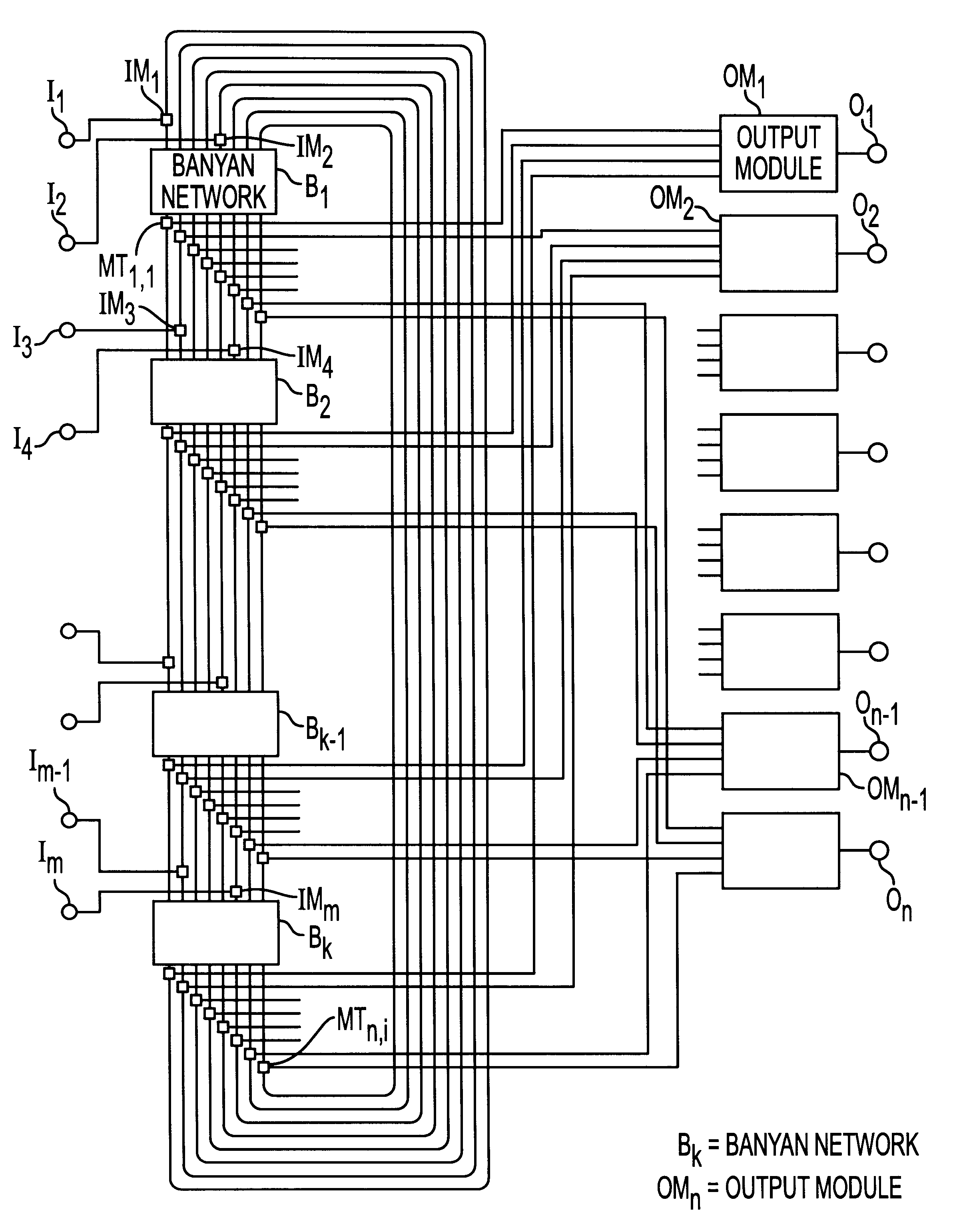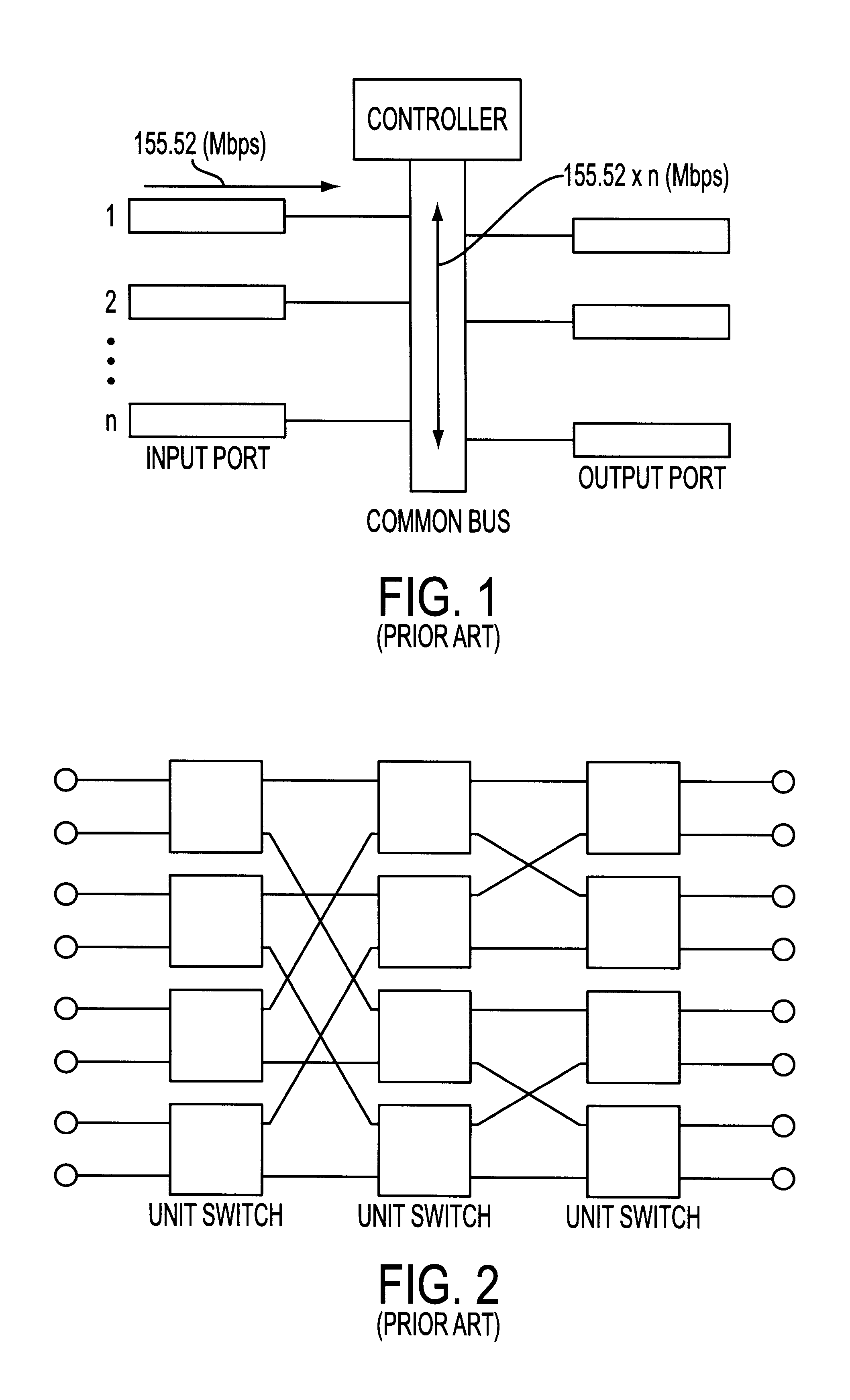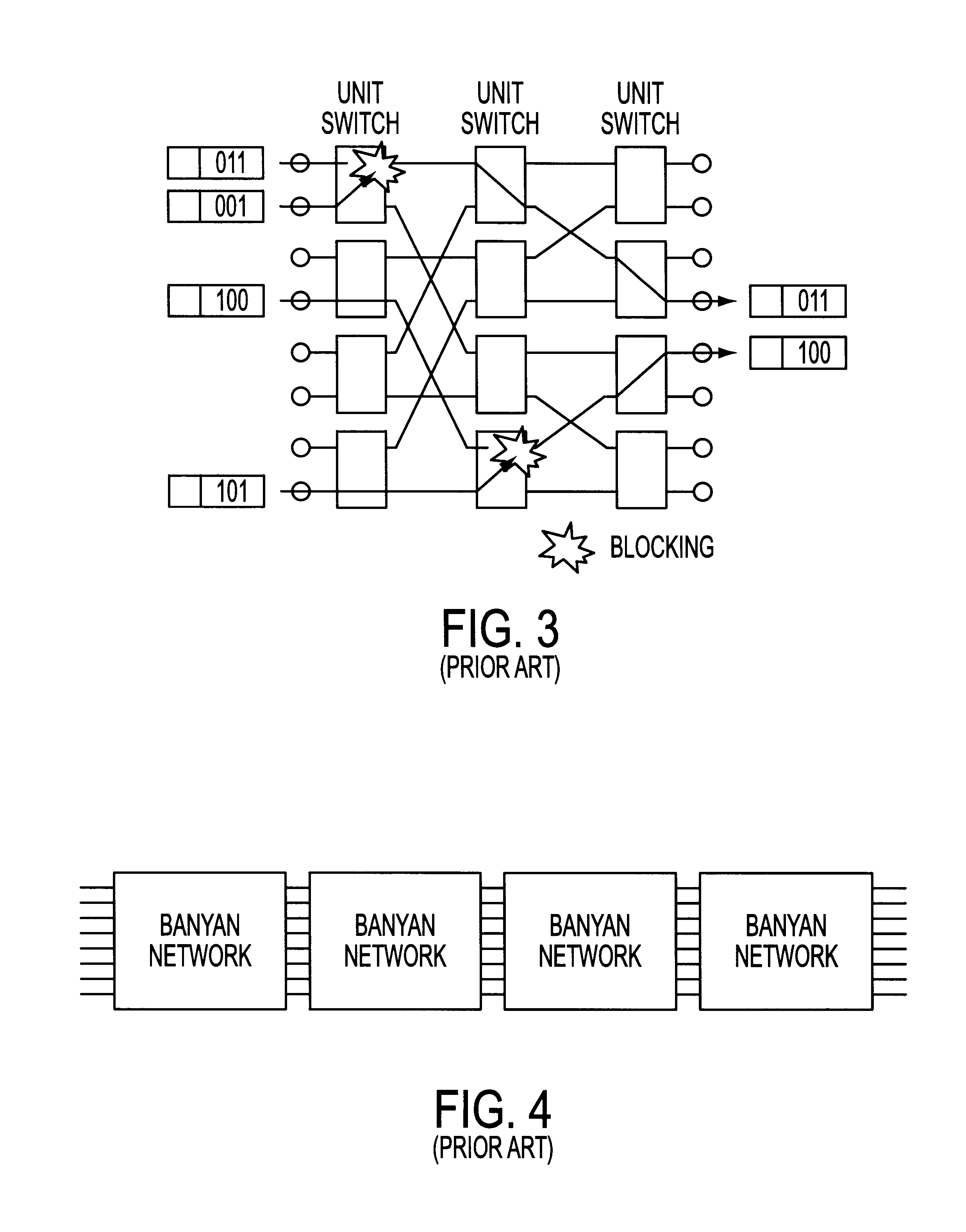System for switching high-capacity and variable length packets
a high-capacity and variable-length packet technology, applied in the field of switching high-capacity and variable-length packet systems, can solve the problems of increased packet inputting rate, undesired internal blockage, and difficulty in realizing a mass switching system having a bit rate more than one tbps (terabit per second) through the common bus system
- Summary
- Abstract
- Description
- Claims
- Application Information
AI Technical Summary
Problems solved by technology
Method used
Image
Examples
Embodiment Construction
FIG. 6 is a block diagram showing an embodiment of the packet switching system according to the invention. The packet switching system comprises m input ports I.sub.h (h=1, 2, . . . , m) and m input modules IM.sub.h (h=1, 2, . . . , m), said input ports I.sub.h are connected to said input modules IM.sub.h. In the present embodiment, first two input ports I.sub.1 and I.sub.2 are connected to a first input module IM.sub.1, and a second input module IM.sub.2, respectively, the second two input ports I.sub.3 and I.sub.4 are connected to a third input module IM.sub.3 and a fourth input module IM.sub.2, respectively, and so on. The packet switching system further comprises k Banyan neworks B.sub.i (i=1, 2, . . . , k) each of which includes n outputs, nxi misroute tag check parts MT.sub.h,i and n output modules OM.sub.j (j=1, 2, . . . , n) each connected to respective output ports O.sub.j. In the embodiment shown in FIG. 6, it is assumed that m=n=8 and k=4, but these numbers may be set to ...
PUM
 Login to View More
Login to View More Abstract
Description
Claims
Application Information
 Login to View More
Login to View More - R&D
- Intellectual Property
- Life Sciences
- Materials
- Tech Scout
- Unparalleled Data Quality
- Higher Quality Content
- 60% Fewer Hallucinations
Browse by: Latest US Patents, China's latest patents, Technical Efficacy Thesaurus, Application Domain, Technology Topic, Popular Technical Reports.
© 2025 PatSnap. All rights reserved.Legal|Privacy policy|Modern Slavery Act Transparency Statement|Sitemap|About US| Contact US: help@patsnap.com



